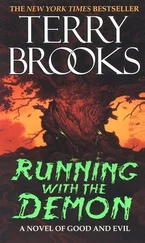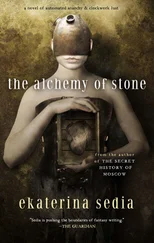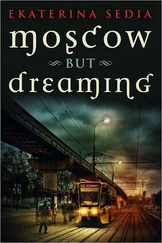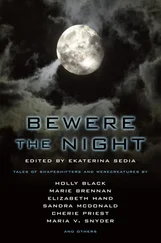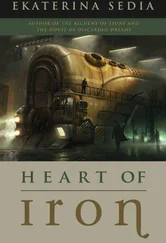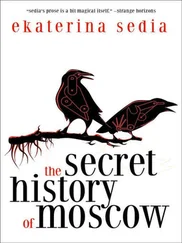Violent aggression is not a necessary part of the definition, but seems to be either an ancillary effect of lycanthropy, or a co-morbid condition with it. Anecdotal reports of friendly lycanthropes are at present unsubstantiated.
Methodology
Numerous difficulties present themselves in any attempt to scientifically test the folklore regarding materials antipathetic to lycanthropes. Foremost among these is the lack of acceptance within the scientific community as to the existence of lycanthropy, beyond the psychiatric condition; this severely limits funding, peer review, and institutional support.
Because of this lack, it proved impossible to test antipathetics under laboratory conditions. The capture and maintenance of one caged specimen, much less several, was judged to be both dangerous and prohibitively expensive. The study therefore proceeded instead via field trials. Through the online community [1] Including the websites Wolfpelt, Lunar Eclipse, and Sisterhood of the Silver Bullets.
, the investigator contacted individuals who had expressed the intention of hunting lycanthropes in the immediate future. These subjects were each provided with a different antipathetic or delivery mechanism thereof, and each expressed his or her willingness to allow the investigator to document the hunt.
In most cases, the field trials were recorded by means of head-mounted night-vision cameras, worn by the experimental subject, which streamed video wirelessly to the investigator’s computer. On occasion it proved feasible to set up a stationary camera. These recordings were supplemented by the investigator’s own notes, and (where possible) exit interviews with the hunters.
This research was not authorized by a Human Subjects Committee or other ethics review board.
Trial 1: argent projectile (modern)
The metallurgy of silver makes it difficult to manufacture silver bullets suitable for use in a modern firearm. [2] Briggs 2005: http://www.patriciabriggs.com/books/silver/silverbullets.shtml.
The investigator secured the use of a university metallurgy lab and the assistance of a professional firearms manufacturer to produce eighteen .357 caliber rounds, [3] Thirty rounds were produced in total; twelve were eliminated due to poor quality, which would have increased the risk of gun malfunction in the field and therefore biased the data. This production issue, however, must be considered relevant to the larger question of efficacy. (For ballistics information on this ammunition, see the appendix.)
or two clips for a Desert Eagle pistol.
The first subject, Hunter A, was a thirty-six-year-old male with a career in law enforcement, whose wife had recently been disemboweled by a lycanthrope. After demonstrating his firearms accuracy so as to establish a baseline for comparison, he commenced the search for his target. [4] For a full account of each subject’s background, involvement in the anti-lycanthrope community, and predatory efforts, see the author’s monograph Under the Full Moon: An Urban Safari Into the Biology of Lycanthropes , in preparation.
Lycanthrope A was discovered consuming the corpse of a small child in a dead-end urban alley. Hunter A positioned himself at the mouth of the alley, approximately thirty meters from the target, while the investigator observed from the other side of the cross-street, concealed behind a newspaper dispenser. Video data shows that Hunter A’s shots exhibited 64% less accuracy than in the baseline demonstration: he had previously declared his intention to aim for the head [5] While it may lie beyond the scope of this study to make tactical evaluations of lycanthrope-hunting techniques, the investigator believes it is generally more advisable to aim for the center mass, for reasons illustrated by Hunter A’s results.
, but of the six shots he fired, two flew wide to the left, three flew wide to the right, and one struck Lycanthrope A in the shoulder. Hunter A attempted to fire a seventh shot, but suffered a gun malfunction, and then was struck to the ground by the charging lycanthrope. It is notable, however, that the lycanthrope fled rather than engage in further confrontation.
Retrieval and examination of the pistol shows that the seventh round did not chamber correctly, owing to the separation of the silver point from its copper case. The decrease in accuracy may arise from multiple causes, including fear-induced operator error. It may be presumed, however, that the difficulty of casting high-quality silver bullets introduces a degree of variability which will decrease performance under field conditions, even where malfunction does not occur.
The escape of Lycanthrope A unfortunately precluded the possibility of forensic examination. Six spent bullets, however—one bloodstained—were recovered from the test location; this indicates that the shot which struck the target’s shoulder passed through the tissue and out the other side. The investigator observed a distinct limp and other indications of pain as the lycanthrope fled (the video camera by this time was recording the pavement), which suggests a genuine injury to the target.
Trial 2: argent projectile (archaic)
The difficulty of casting silver bullets to the exacting specifications of modern firearms suggests that archaic weapons might prove more efficacious, when the variables of performance are weighed against those of manufacture. The investigator therefore secured the assistance of a professional silversmith, who produced twelve balls suitable for use in an eighteenth-century musket.
Hunter B was a twenty-two-year-old female with experience in American Revolutionary War re-enactment, whose boyfriend vanished during a camping trip in the mountains. As with Hunter A, she demonstrated her skill with a replica period weapon before beginning her search. In this instance, the investigator remained at camp, inside an SUV with the engine running and pointed toward the road.
Video data for this trial is non-continuous, due to the problems of wireless transmission in mountainous terrain. On the third night Hunter B observed her target, Lycanthrope B, drinking water from a stream. Unfortunately, she made her observation from a hillside well beyond the range of a musket, and by the time she moved closer, Lycanthrope B had vanished. Subject and investigator therefore returned to that area the following month, and this time Hunter B met with success on the first night. She found her target howling at the moon on a bare hilltop, and the yelping end of the howl indicates that her first shot struck home, though it is not possible from the recording to determine where Lycanthrope B was wounded. The target fled, however, before Hunter B could reload her musket. No limp was discernible on this occasion, which may indicate that the lesser muzzle velocity of an archaic firearm caused the projectile to penetrate less deeply than in Trial 1. Upon returning to the hilltop in daylight, Hunter B found little sign of blood, which corroborates this speculation.
The trial could not be continued on the following night due to the disappearance of Hunter B.
Trial 3: argent shot
The investigator pursued one further solution to the difficulty of silver bullets, in the form of shot. Silver beads were obtained from a craft store, and placed in a shotgun cartridge in lieu of the customary lead shot. The firearm in this instance was a Remington 870 pump-action shotgun.
Hunter C was a fifty-seven-year-old male with over forty years of hunting experience. His six-year-old son had been fatally mauled the previous summer on Hunter C’s ranch. The subject declined to undergo a formal demonstration of his marksmanship, despite explanations of its value for research, but did feed the investigator a dinner cooked from a pheasant he brought down with his shotgun.
Читать дальше

